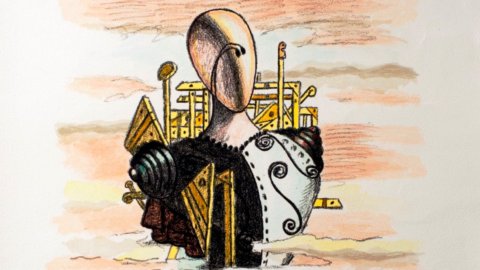The exhibition, scheduled from 12 January to 11 February 2017, at the 29 ARTS IN PROGRESS gallery. The exhibition is curated by Nikolaos Velissiotis, offers 30 works, including paintings, drawings, bronze sculptures and watercolor lithographs by de Chirico himself and represents a tribute to the master, precisely in the city that hosted, in the Royal Palace, in 1980, a large anthology of his work, two years after his death.
The title of the exhibition, That man of multiform genius, taken from the invocation to the Muse from Homer's Odyssey, unites the figure of Ulysses with that of de Chirico. As stated by the curator, who shares the same place of birth with the artist, “It is not usual to associate the name of de Chirico with Ulysses. His name rather refers to Hermes – Chirico in Greek means the messenger of the gods – or to one of the Dioscuri, sons of Jupiter. Instead I believe that Ulysses is the most appropriate name considering the multiplicity of his interests, the continuous movements and the inevitable Nietzschean return, which he repeatedly described in his texts ”.
Giorgio de Chirico was born in 1888 in Volos, Greece, of Italian parents. After his father's death, he moved to Munich with his mother and brother, the painter Alberto Savinio, and here he enrolled at the Academy of Fine Arts. In 1910 he moved to Florence, where he painted his first metaphysical paintings; the following year he was in Paris where he developed the theme of the Piazza d'Italia. He took part in an exhibition for the first time in 1912, at the Salon d'Automne, and was noticed by Picasso and Apollinaire, who would define him as "the most exciting painter of the new generation". In 1924 and 1932 he took part in the Venice Biennale, and in 1935 in the Rome Quadrennial; in these years he moved to New York where he collaborated with Vogue and Harper's Bazaar and exhibited his works at the Julien Levy Gallery. He moved permanently to Rome in 1944, where he died following a long illness in 1978.





